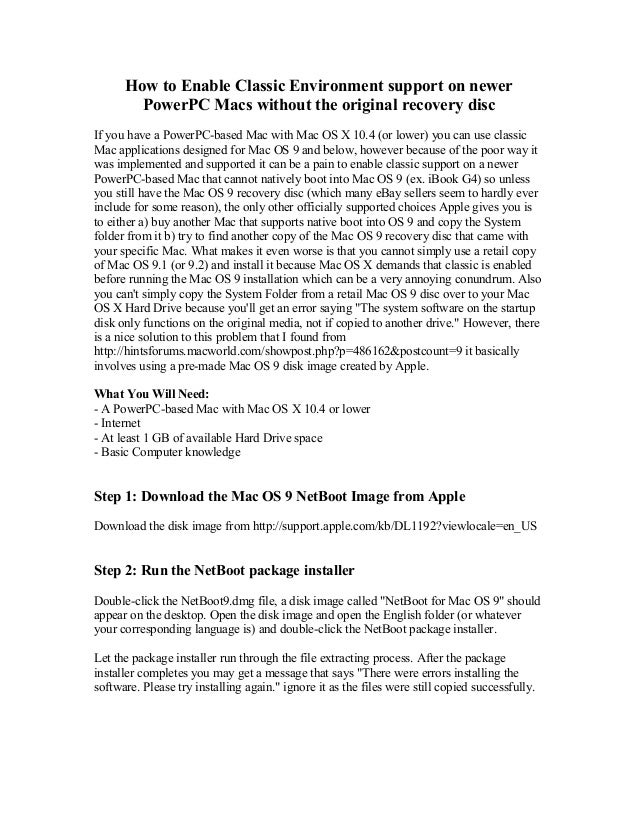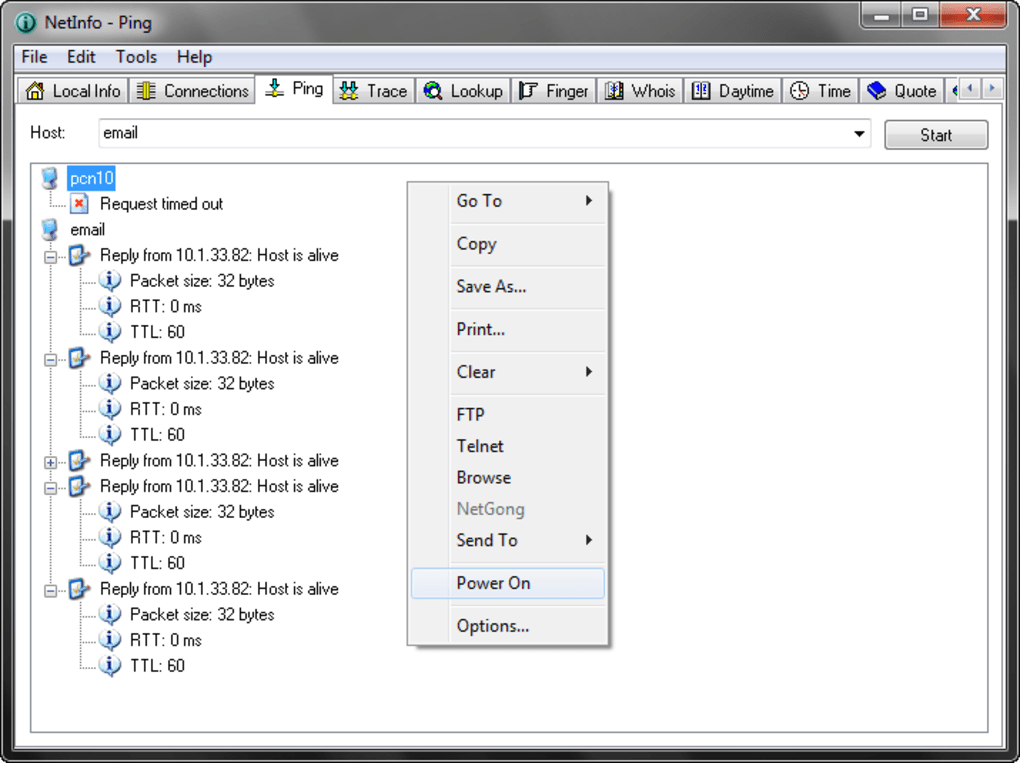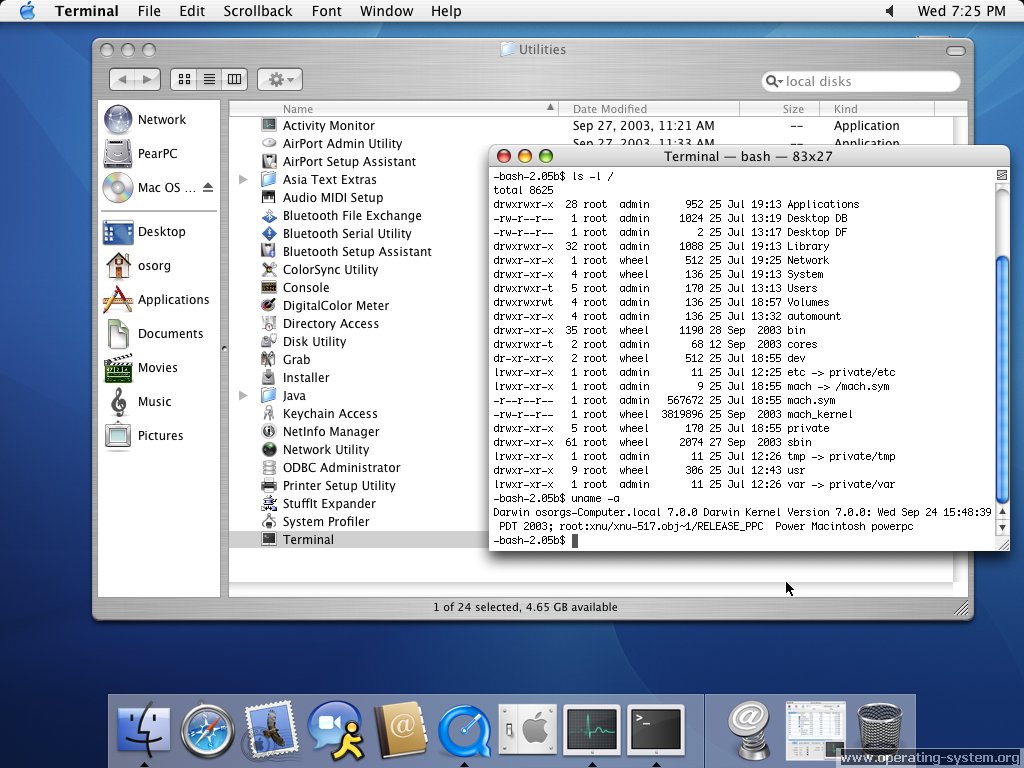- Netinfo Manager Download Mac Version
- Netinfo Manager Download Mac Os
- Netinfo Manager Download Mac Download
To run Grace Mac OS X users may also need to install OpenMotif for Mac and have to change the default login shell (bash) to tcsh shell: Mac OS 10.4: Use the application utility Netinfo Manager. Under the “users” category in Netinfo Manager, look for the desired login name and find the “shell” item in the list of properties for that account. NetInfo Manager is not included with Mac OS X 10.5 Leopard. You can use the command line utility dscl to perform some advanced functions formerly covered by NetInfo Manager. For example, you can use dscl to add or remove users from system groups such as “admin”.
| Click here to return to the 'Apple's NetInfo Manager documentation' hint |
Well, users finally have a resource for what the 'Network' folder in the root of the HD is under OS X. How to fully utilize it seems a bit complex, but I'm starting the process of attempting to use netinfo to fully utilize it on my home network such that all computers are automatically mounted and a user's home folder is stored on the Server.
The documentation is geared toward OS X Server, so any hints or more simplified tutorials would be much appreciated...
Anyone done this w/o using OS X Server?
I know that the netinfo commands avaiable in the CLI are available, and I attempted to start. The task, however, is much more complicated once you get into it. I want to create a domain such that a user can log into it and have their user folder mounted from the Server along with shared disks from other computers. I could set up each computer's local NetInfo db to mount a share and user folder, but that would seem redundant and pointless because each new computer that is added would have to be set. With a domain, I can just join the domain (using the Directory Setup app under /Applications/Utilities), and all the services like printers, shares, user folders are automatically there for the new user.
I've almost got it figured out, but this tutorial gives some instructions for manipulating NetInfo from the CLI, but the rest is using OS X Server admin apps.
For example, once the domain is created (for a simple heirarchy, the NetInfo tag must be 'network') on the designated OS X machine - one needs to have a root user under that domain. How do you add that from the command line?
Also, there is a hint on how to automount nfs shares over the network, but what does an afp automount look like (what 'opts' are necessary?) in the NetInfo Manager?
It would be fantastic to have a tutorial how to for setting up a simple network without the OS X Server tools to share user information for username, passwords and how to log into a home or other directory. The capability is there but the specifics are not as far as I can see.
In the same spirit...
I have played with NetInfo to establish local resolves for URI domain names on the host machine (following the examples at Evolt - Setting Up Virtual Hosts under OSX), but have not been able to get this information seen by other Macs on my network.
1. Can non-OSX Macs use information in the NetInfo database (like DNS)?
2. Can I export information from NetInfo in any format to zone files for use by BIND?
I know that somehow NetInfo uses Lookupd to manage requests for information amongst various sources, but the only sure fire way I have found for all machines on my network to access the same DNS is to use BIND and remove the entries I made in NetInfo.
Anyone with insight into this?



Netinfo Manager Download Mac Version

Netinfo Manager Download Mac Os

(instructions for using BIND here )
Netinfo Manager Download Mac Download
How To Enable Classic Environment support for newer PowerPC Macs without the original recovery disc
If you have a PowerPC-based Mac with Mac OS X 10.4 (or lower) you can use classic Mac applications designed for Mac OS 9 and below, however because of the poor way it was implemented and supported it can be a pain to enable classic support on a newer PowerPC-based Mac that cannot natively boot into Mac OS 9 (ex. iBook G4) so unless you still have the Mac OS 9 recovery disc (which many eBay sellers seem to hardly ever include for some reason), the only other officially supported choices Apple gives you is to either a) buy another Mac that supports native boot into OS 9 and copy the System folder from it b) try to find another copy of the mac os 9 recovery disc that came with your specific mac. What makes it even worse is that you cannot simply use a retail copy of Mac OS 9.1 (or 9.2) and install it because Mac OS X demands that classic is enabled before running the Mac OS 9 installation which can be a very annoying conundrum. Also you can't simply copy the System Folder from a retail Mac OS 9 disc over to your Mac OS X Hard Drive because you'll get an error saying 'The system software on the startup disk only functions on the original media, not if copied to another drive.' However, there is a nice solution to this problem that I found from http://hintsforums.macworld.com/showpost.php?p=486162&postcount=9 it basically involves using a pre-made Mac OS 9 disk image created by Apple. What You'll Need: - Internet - Basic Computer knowledge Step 1: Download the Mac OS 9 NetBoot Image from AppleDownload the disk image from http://support.apple.com/kb/DL1192?viewlocale=en_US Double-click the NetBoot9.dmg file, a disk image called 'NetBoot for Mac OS 9' should appear on the desktop. Open the disk image and open the English folder (or whatever your corresponding language is) and double-click the NetBoot package installer. Let the package installer run through the file extracting process. After the package installer completes you may get an message that says 'There were errors installing the software. Please try installing again.' ignore it as the files were still copied successfully. Step 3: Enable and login to the Mac OS X root userAfter running the NetBoot 9 package installer you should notice a folder called NetBootInstallation. This is where the Mac OS 9 Disk Image resides, but for some reason its access is restricted for regular users (even Admin type users), so you'll need to enable the Mac OS X root account. To enable the root user you must use the NetInfo Manager app (located in the Applications > Utilities folder). In the NetInfo Manager click the Lock to the bottom left of the app (you'll need to authenticate to an admin account to do this), then click Security, then Enable Root User. If it asks you set a password for root just set any password that you can remember. Now log out of your current account (or switch users to the login window if you have fast user switching enabled). When on the login dialog click Other.. then enter root for the username and the password you entered earlier, then click login. Step 4: Copying the Mac OS 9 files from the disk imageNow that you're logged in as root you can access the previously inaccessible NetBootInstallation folder. Navigate to the NetBootInstallation folder, first copy the Mac OS ROM file to your Mac's hard drive, then double-click the NetBoot HD.img file (the actual Mac OS 9 Disk Image) to open the disk image and copy the Applications (Mac OS 9) and System Folder folders to your Mac's hard drive. Step 5: Cleaning up and first classic startupNow that the Mac OS 9 files are copied the NetBootInstallation folder can be deleted (as it's no longer needed) and you can log out of the root account and back into your regular Mac OS X account. Also for security reasons you should disable the root account by simply going back into NetInfo Manager, click the bottom left lock, re-authenticate yourself and then click Security, then Disable Root User. Now to start classic open the System Preferences app, click Classic, then in the classic settings click the Start button. If there are other System Folders that classic finds make sure to pick the one simply titled System Folder in your mac's hard drive. Now classic should start up for the first time. If it asks you to update the classic installation just push the update button to continue. Once Mac OS 9 fully boots up classic is now enabled and you can enjoy any classic application you want again. :) |